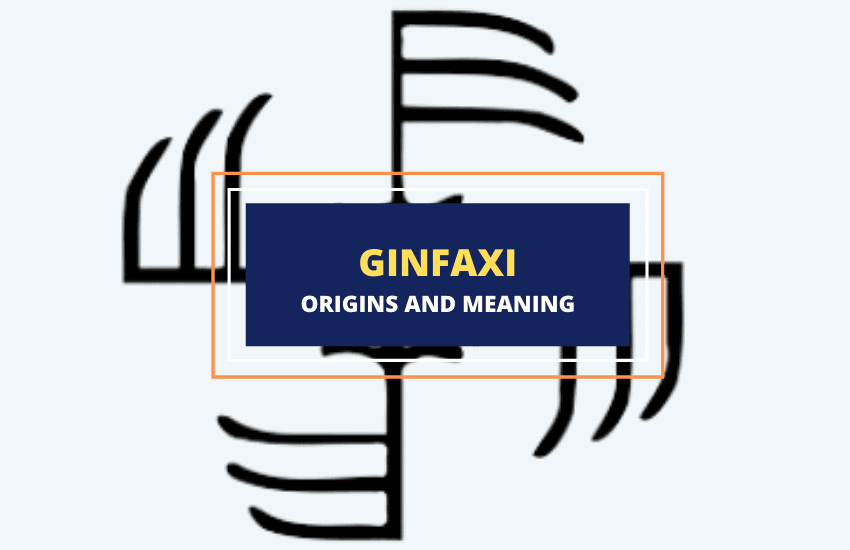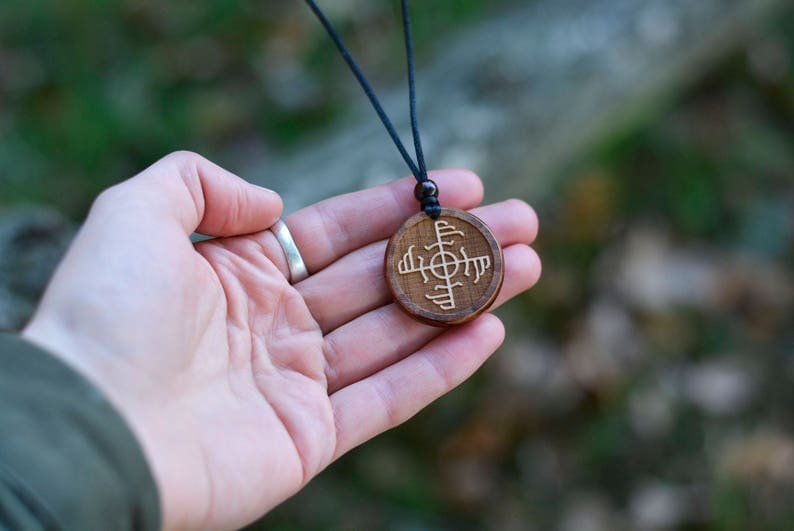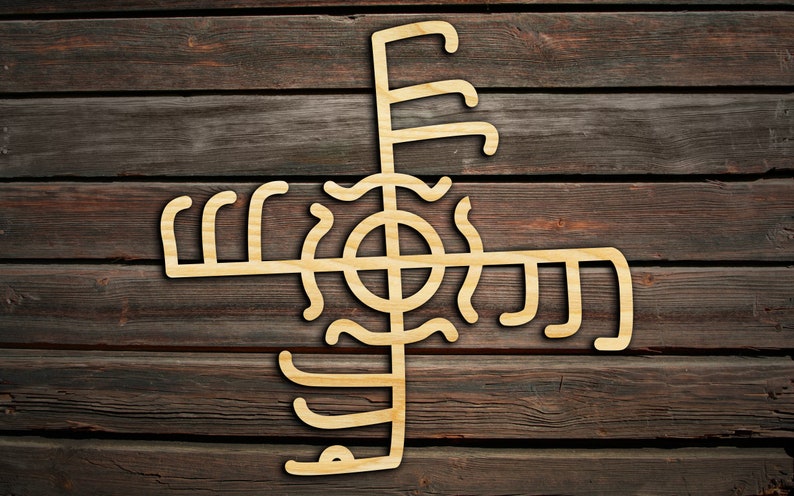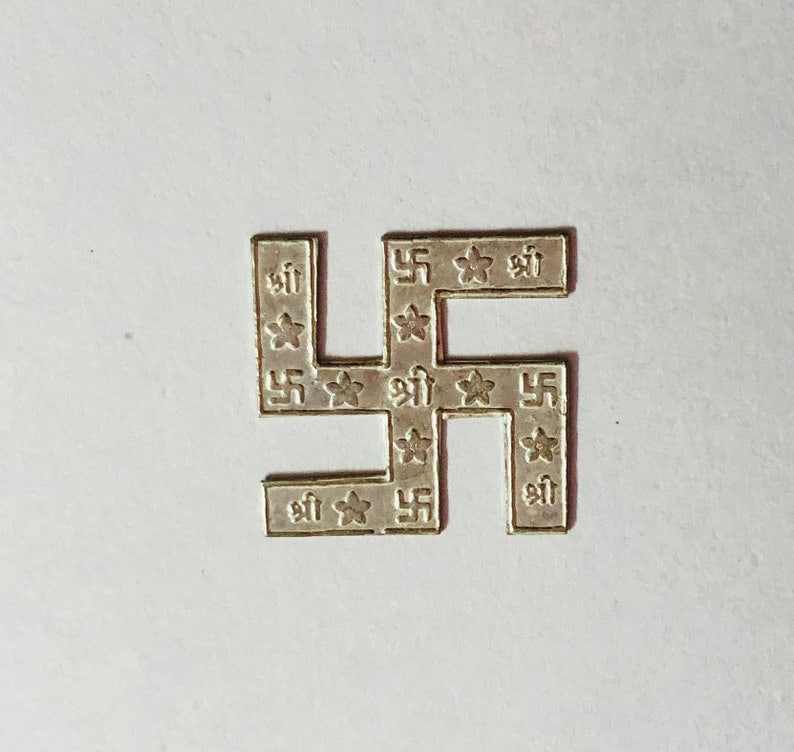
Table of Contents
The Norse languages are full of hundreds of fascinating symbols, many of which we still don’t fully understand today. One such curious example is the Icelandic stave (i.e. a magic sigil, rune, symbol) Ginfaxi.
This interesting sigil looks quite a bit like the Nazi swastika, however, it has several “fingers” to each “arm” rather than the single finger of the swastika. Ginfaxi also has a more stylized center with a circle and four wavy lines around it.
Does this mean that Ginfaxi inspired the Nazi swastika? Why does it seem so similar to other swastika-looking symbols around the world? And why is Ginfaxi used as a good luck symbol in Icelandic wrestling? Let’s go over each of those points below.
What is the Ginfaxi Stave?

The exact meaning or origin of the Ginfaxi stave is up for debate. Such staves were used as purely magical symbols and not as runic letters, so they often didn’t have a specific meaning – just a use. Ginfaxi was used in the Nordic form of glima wrestling to infuse the fighter with power.
As for its origins, most of the theories revolve around the Ursa Major constellation or ancient comet sightings, as we’ll mention below. It is notable that Ginfaxi has a swastika-like design – one that’s shared in runic letters and symbols in dozens of cultures around the world.
Ginfaxi in the Icelandic Glima Wrestling
The main thing Ginfaxi is known for today is its use as a good luck stave in the Nordic wrestling called glima. This wrestling style is a famous Vikings’ martial art and a lot of its practitioners share a strong affection toward the ancient Norse culture, mythology, and runes.
The Ginfaxi stave is used in glima wrestling in conjunction with a second rune called Gapaldur. Wrestlers put the Ginfaxi stave in their left shoe, under the toes, and they place the Gapaldur rune in their right shoe, under the heel. This ritual is believed to magically ensure victory or, at least, increase the combatant’s chances.
Why under the toes of the left shoe?
The exact reason why Ginfaxi has to be placed under the toes of the left shoe and Gapaldur – under the heel of the right – isn’t clear. It is tradition, however, and it likely has to do with the wrestler’s foot positioning in glima fighting.
What is the meaning of the Gapaldur symbol?
Like Ginfaxi, Gapaldur is a magic stave – a rune that’s said to have magical powers. There are hundreds of such staves in the Nordic and Icelandic cultures, each with its specific magical use. They don’t really have “meanings”, however, as they weren’t letters or words used for writing. In fact, Gapaldur is even less known than Ginfaxi, as the latter at least has a few theories regarding its origin and shape.
Ginfaxi’s Potential Comet Origins
One theory as to why Ginfaxi looks as it does is that it resembles the shape of a comet that’s flying low enough for its rotating tails to be noticeable. While we usually see comets as just flying in a straight line and leaving a single tail behind them, that’s not how they always look.
When a comet rotates, its tail will rotate with it. This can appear as if the comet has multiple tails coming from all its sides, just like a swastika symbol. This is further supported by the etymology of Ginfaxi with –faxi meaning mane in old Norse, as in a horse’s mane.
The meaning of the first part of the name Gin isn’t known. However, there are other Icelandic staves with –faxi in the name, such as Skinfaxi (Bright Mane), Hrimfaxi (Frost Mane), Gullfaxi (Golden Mane), and others that were used for horses.
So, the theory is that the ancient Norse people had seen low-flying comets, interpreted them as flying celestial horses, and modeled the Ginfaxi stave after them to try and magically channel their power. Theories such as this and the one below are further supported by the fact that many other cultures around the world also have swastika-shaped symbols. This makes it likely that they all just observed the night sky and drew inspiration from it.
Ginfaxi as Ursa Major (The Big Dipper)
Another theory that’s even more widely accepted is that Ginfaxi was modeled after the well-known star constellation Ursa Major (The Big Dipper). Rotating around the North Star, The Big Dipper is one of the brightest and most easily seen constellations in the night sky.
We know the ancient Nordic people had noticed this constellation thousands of years ago as did many other cultures across the globe. While the Big Dipper isn’t shaped like a swastika, its rotation around the North Star throughout the year makes it look that way.
Ginfaxi and the Nazi Swastika


As for the potential connection between Ginfaxi and the Nazi swastika – it’s purely visual. The Nazi party in Germany actually took the swastika design from the Sanskirt symbol for good luck, the revolving sun, and the infinity of all creation.
The “identity theft” of the symbol happened soon after the German antiquarian Heinrich Schliemann did some archeological investigation in the Hisarilik region of Turkey during the late 19th century. There, on the site of what Schiemann believed was ancient Troy, he discovered numerous artifacts with Sanskrit swastika designs on them.
Schliemann made the connection between these Sanskrit swastikas and similar, ancient Germanic symbols on 6th-century pottery artifacts he had seen prior. Schliemann concluded that the symbol must have some universal and prehistoric religious meaning about the world and humanity.
He wasn’t wrong, insofar as the symbol is seen in a lot of cultures around the world. This worldwide distribution is likely just because of the symbol’s intuitive design, however, and its likely night sky origins.
Wrapping Up
Like other Icelandic magical staves, the Ginfaxi was used to give certain powers to its user. However, its exact origins and meanings are unknown to us. It remains a popular design in fashion, tattoos, and décor, especially among those who are drawn to Icelandic designs and history.








